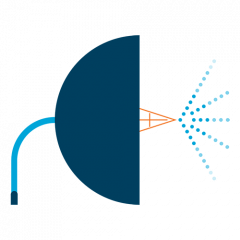Who: The Internet Corporation for Assigned Names and Numbers (ICANN)
When: October 2013
Where: Worldwide
Law stated as at: November 2013
What happened:
ICANN have published rules to govern disputes between trade mark owners and the registrars of generic Top Level Domains (gTLDs). The rules, which govern the Post-Delegation Dispute Resolution Procedure (PDDRP), are being implemented as part of the imminent expansion of the number of gTLDs on the internet, on which see our September update here.
gTLD expansion in brief
At present the internet contains around 20 gTLDs such as .com, .org, .biz etc. in addition to a couple of hundred country code top level domains (ccTLDs) such as .es, .fr, .uk etc. More than 1,900 applications to operate new gTLDs were received and processed last year as part of the new expansion programme. The new gTLDs can comprise any combination of characters. These may be general terms such as .car or .shopping but can be brand-specific such as .audi or .asda.
The new rules
While the application process for new gTLDs provided opportunities for trade mark owners to object to the registration of a new gTLD which conflicted with their trade mark rights, the new rules give trade mark owners the right to challenge successful registrars even after the gTLD has been delegated and becomes operational.
The PDDRP and PDDRP Rules, allow trade mark owners to object to:
(i) The use by the registrar of a gTLD string which is identical or confusingly similar to its trade mark and causes or materially contributes to:
a. taking unfair advantage of the distinctive character or reputation in the trade mark;
b. causing detriment to the distinctive character or reputation in the trade mark; or
c. creating a likelihood of confusion with the trade mark; and
(ii) Conduct on the part of the gTLD registry operator to the extent that:
a. there is a substantial pattern of bad faith intent to profit from the sale of second level domains within the gTLD registry that infringe trade mark rights; and
b. there is a bad faith intent to profit from the systematic registration of domain names within the gTLD that are identical or confusingly similar to the complainant’s trade mark which:
i. takes unfair advantage of the distinctive character or reputation in the trade mark;
ii. causes detriment to the distinctive character or reputation in the trade mark; or
iii. creates a likelihood of confusion with the trade mark.
The new PDDRP Rules can be found online here.
The PDDRP, which was first published in June 2012, can be found here.
Commentary suggests types of case where PDDRP comes into play
Commentary in the PDDRP suggest that an example of a registrar infringing a trade mark owner’s rights at the second level would be where a registry operator has a practice of actively and systematically encouraging registrants to register second level domain names and to take unfair advantage of the complainant’s trade mark. Alternatively, a gTLD registrar which had a practice of acting as the registrant or beneficial user of infringing second level domains within its own registry to monetise and profit in bad faith, would also be prone to challenge under the new rules.
The PDDRP and PDDRP Rules provide for a reasonably streamlined procedure for the electronic filing of complaints by trade mark owners, the filing of submissions in response and the ongoing conduct of the dispute. Complaints may be filed with approved PDDRP Providers, the first three of which to be appointed are: The Asian Domain Name Dispute Resolution Centre (ADNDRC); The National Arbitration Forum (FORUM); and The World Intellectual Property Organization (WIPO). The Providers may stipulate supplementary rules to govern their own processes so long as they do not contradict the PDDRP or PDDRP Rules. Complaints will be heard by Expert Panels of between one and three experts appointed by the Providers.
The Expert Panels will make Expert Determinations of the outcome of the dispute, normally without a hearing in person.
Costs
Official fees for filing complaints and responses will be set by the Providers. Additionally, Providers will estimate the cost of the proceedings and the complainant will be expected to pay those costs in advance pending the outcome of the proceedings. If the complainant is successful, the gTLD operator must reimburse them in full. If the gTLD operator successfully defends the complaint, the complainant loses the moneys paid in advance.
Remedies
The PDDRP expressly states that monetary damages (other than payment of costs per the above) are not a remedy available to complainants. Additionally, transfer of infringing second level domains will only be available to a successful complainant if they were in fact registered by the gTLD operator or their agents (otherwise, trade mark owners should pursue abusive registrants in the normal manner via a Uniform Domain Dispute Resolution Procedure (UDDRP)).
Restrictions and sanctions may be imposed on the gTLD operator, for example requiring them to monitor second level applications for terms which might infringe the complainant’s rights, or the suspension of the sale of second level domains. Only in very exceptional circumstances will the termination of the gTLD operator’s Registry Agreement with ICANN be appropriate.
If the complaint filed is deemed to have been without merit, the Expert Panel may award sanctions in favour of the gTLD operator, including temporarily banning the complainant from making complaints (or permanently if they are a repeat offender) and the imposition of costs, including reasonable legal costs.
Why this matters:
These rules provide a little more comfort for trade mark owners that, with the imminent expansion of the number of gTLD operators, such operators are required to respect third party trade mark rights or face challenges under the PDDRP. That said, the requirement for complainants to pay costs in advance of the proceedings in advance, and the absence of monetary damages as remedy, means that the PDDRP may be a mechanism that appeals only to most aggrieved and deep-pocketed of trade mark owners.








